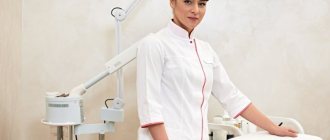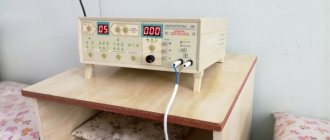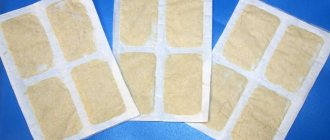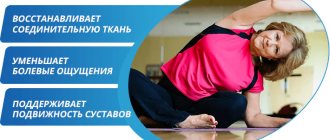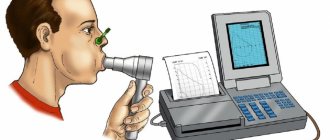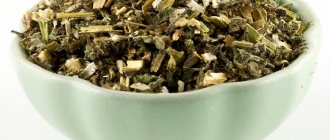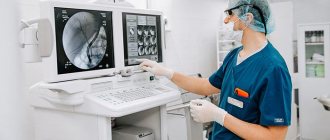★★★★★
Radon baths are procedures using water that is enriched with an inert gas - radon. A course of such baths has a beneficial effect on the entire body, including the immune system, increases performance and improves well-being. The procedures are useful for men and women, and you can undergo them in Belokurikha sanatoriums, where treatment with natural factors is practiced. Let's look at the beneficial properties of radon.
Contraindications for radon baths
Radon baths are a useful service at the resorts of Belokurikha, however, this procedure has several limitations, which include the following:
- epileptic seizures;
- angina pectoris and other heart rhythm disturbances (preliminary consultation with a cardiologist is required);
- benign and malignant neoplasms, other oncological diseases;
- leukopenia;
- tuberculosis;
- During pregnancy and breastfeeding;
- individual intolerance to radon, which can result in allergic reactions.
As you can see, radon baths are contraindicated only in severe pathologies. All other patients can safely sign up for a course of procedures that will bring health and well-being.
A few words about radon and its effects
Radon is a heavy, expensive inert gas, discovered in the 20th century, found in its pure form in about 300 natural sources: in Altai, Crimea, Primorye, Pyatigorsk, Molokovka (Russia - about 30 in total), Khmelnik (Ukraine), Bad- Nauheim and Bad Brambach (Germany), Tskhaltubo (Georgia), etc.
Natural springs are considered the most valuable, which is why sanatoriums with radon baths built in close proximity to them are very popular.
Radon waters are classified into weak (from 1 to 10 nCi/l) and strong radon, with a gas concentration of 120-200 nCi/l.
Artificial baths are prepared from a concentrated aqueous solution of gas, which is obtained in a bubbler with a radon saline solution located in a lead container. Due to the high radioactivity of the concentrate, it is diluted using special methods, observing safety rules and sanitary standards.
The decay of the gas is accompanied by the release of a-radiation. When radon molecules deposit on the skin, which is called active plaque, alpha radiation leads to the ionization of water molecules and proteins in the dermis, during which toxic metabolites of hydroperoxides and oxygen are formed.
Autoantigens, which are products of radiolysis of protein molecules, are transported by Langerhans cells and, like products of photodestruction of proteins, come into contact with sensitized T-helper lymphocytes. As a result, cytokines are released and the formation of neutral proteases, immunoglobulins and substances with biological activity is accelerated.
Also, the activity of immune processes in the dermis is enhanced by lipid oxidation products: the differentiation and proliferation of T- and B-lymphocytes with the production of immunoglobulins is activated. Radon alpha radiation enhances the differentiation of cells of the spinous and basal layers of the epidermis of the skin. As a result of α-irradiation of melanocyte cells, DOPA, DOPA-amines and DOPA-quinones are formed, which stimulate the synthesis of melanin. In addition, radon accelerates the synthesis of glycosaminoglycans in scar tissue, consisting of connective fibers, which leads to the formation of structurally ordered fibers of granulation tissue.
Recommendations for the use of radon baths
On the information portal you will see Belokurikha sanatoriums with official websites where you can undergo treatment with radon. Before prescribing the procedure, the doctor conducts a thorough medical examination, after which he determines the need for radon baths, their duration and the number of procedures.
The sanatoriums have modern equipment, hydromassage facilities, sessions are held in comfortable rooms, so the procedures will be not only useful, but also enjoyable.
When preparing such baths, pure radon is used in the required concentration (it is selected depending on the characteristics and stage of the disease). That is why the therapeutic effect will be guaranteed, and after just a few procedures you will notice an improvement in your condition.
The sanatoriums employ qualified medical personnel who will definitely advise you, answer all questions, and monitor your well-being during the sessions.
Here are some recommendations for taking radon baths for maximum effect:
- The optimal duration of one procedure is no more than 15 minutes. The exact time is determined by your doctor depending on your condition.
- During the procedure, the patient must lie in a relaxed position and follow the specialist’s instructions.
- The bath should not be taken on a full or empty stomach; the optimal time is two hours after eating.
- Most experts do not recommend performing such procedures in the acute stage of the disease, including at high body temperature and general intoxication.
- On the eve of the procedure, you should refrain from smoking and drinking alcohol.
- If you have diseases of the cardiovascular system, you should not immerse yourself completely in the bath.
History and popularization
At the beginning of the 20th century. The healing effect of the waters was explained by a mysterious emanation, which is essentially alpha radiation.
Over 100 years of development, the healing technique has experienced several periods from triumph after the discovery of the healing effects of gas to absolute oblivion and fear after radiation accidents. Some American publications call radon therapy absolute stupidity. Today, the technique is mainly regarded as an auxiliary therapeutic method, which should be used only with a doctor’s prescription, and the benefits and harms are considered differently by different specialists. The fact is that people have an individual response to radon - for some the procedures help a lot, but for others they do not notice any improvements.
The first Russian radon resort, Belokurikha, was opened in 1867 at hot springs. The gases and waters of the Belokurikha springs were studied in 1907-1908 by scientists from the Tomsk Technological Institute - they belong to low-radon waters.
Sale of vouchers to the Belokurikha sanatorium
Our information portal provides up-to-date information about Belokurikha sanatoriums, where you can take a course of radon baths. Here you can find prices, a list of procedures and accommodation features, and discounts. If you want to buy a ticket to one of the Belokurikha sanatoriums, call us toll-free at 8-800-700-9390 or visit the office of our travel company. We will tell you about the cost, discounts for pensioners, accommodation features, and help you choose the right room for a comfortable stay.
Effects during the procedure
During the procedure, about 0.3-6.4% of radon contained in water enters the body through the respiratory system and skin, which causes α-irradiation of the tissues of internal organs. After radon baths, the main depot of absorbed gas is the skin; about 3% is deposited in the basal cell layer of the subsegmental and segmental bronchi.
By increasing the affinity of α- and β-adrenergic receptors of tissues to produced substances with biological activity and mediators, radon causes two-phase changes in the limited blood flow in them.
The primary short-term spasm of the vessels of the external dermal plexus (1-3 minutes) is replaced by a long-term dilation of the arterioles and a slight slowdown in venular outflow. This causes hyperemia of the skin and an increase in the volume of circulating blood. The conductivity of nerve conductors (unmyelinated) against the background of radon stimulation decreases significantly, which leads to a decrease in pain. The tone of the parasympathetic part of the autonomic nervous system also increases, and the sympathetic part, on the contrary, increases.
Due to the modulation of ligand-receptor connections in the adrenoreceptors of the lungs and heart, radon leads to an increase in cardiac output and stroke volume, causes prolongation of diastole and shortening of systole, without changing the heart rate. Breathing slows down and becomes deep.
By activating the adrenal cortex, the gas leads to stimulation of the synthesis of corticosteroid hormones and the production of insulin by the pancreas. As a result, the processes of glycolysis and lipolysis intensify in the body, which leads to a decrease in basal metabolism, weight loss and a decrease in low-density lipoproteins and free fats in the blood. Radon, on the contrary, slows down the function of the thyroid gland and ovaries.
Natural springs: which resorts use radon waters
- Bad Gastein, a balneotherapy resort, near Salzburg, Austria.
- Tvarcheli and Tskhaltubo in Georgia.
- Heviz, balneological sanatorium, near Budapest, Hungary.
- Jachymov, Czech Republic.
- Greece: Pletistoma, Loutrakion, Nigrita, Euboea, Loutrakion.
- Khmilnik and Truskavets, Ukraine.
- Baden-Baden, Germany.
- Hisarya in Bulgaria.
- Casamicciola - Terme, Ischia, Lacco Ameno, Abano Terme and Bormio (Bagni di Bormio) in Italy.
- Alama de Aragon, Spain.
- Poland: Swieradow-Zdroj, Lendek-Zdroj (Bad Landek), Szczawno-Zdroj.
- Joagiu, Borsec, Baile-Felix in Romania.
- Anshan and Xinglong Radon Spring Valley in China.
- Igalo, Montenegro.
- Croatia: Istarske Toplice and Doruvar.
- Vichy and Dax in France.
- Banja Koviljaca, Niska Banja in Serbia.
- Baden, Switzerland.
- Lepelsk, Belarus.
Therapeutic effects
Treatment with radon baths causes the following therapeutic effects:
- anesthetic;
- anti-inflammatory;
- immunostimulating;
- reparative-regenerative;
- metabolic;
- vasodilator;
- epithelializing.
The benefit of radon baths is to accelerate all metabolic processes. Damaged tissues are restored much faster and more efficiently from all kinds of damage, and inflammatory phenomena are leveled out.
Presence of radon in buildings
Most people are most exposed to radon in their homes, where they spend a lot of time. However, workplaces inside buildings can also be a source of adverse exposure. The concentration of radon inside buildings depends on the following factors:
- geological features of the area, for example, uranium content and permeability of underlying rocks and soils;
- routes for radon to enter a building from the ground;
- release of radon from building materials;
- the frequency of changes in air masses in a room due to the supply of atmospheric air, which depends on the design of the building, the habits of people regarding the ventilation of the premises they occupy and the tightness of the building.
Radon enters buildings through cracks in floors or at the junctions of floors and walls, unsealed service openings around pipes or cables, small pores in walls built from hollow concrete blocks, cavities in walls, and through internal gutters and drainage systems. Radon concentrations are usually higher in basements, basements, and living areas in contact with the ground. However, significant concentrations of radon in a building can be observed above ground level.
Radon concentration levels in adjacent buildings can vary greatly, and within the same building can vary daily and even hourly. Because of these variations, the preferred method for determining the annual average level of radon in indoor air is to conduct measurements over at least three months. There are inexpensive and easy ways to determine residential radon levels using small passive dosimeters. To ensure consistency and reliability of data needed for decision-making, measurements should be based on national protocols. Short-term radon testing, which is carried out in accordance with national protocols, can be useful for decision-making in situations where time is a critical factor, such as when selling a home or when testing the effectiveness of radon mitigation work.
Benefits for children
Children of school and preschool age from 5 years of age are allowed to treat with its use the following diseases:
- eczema, skin rashes ;
- diabetes ; _
- bronchial asthma;
- cerebral palsy;
Preference should be given to a natural source with low radon levels .
Treatment of children with cerebral palsy takes place in several courses, and the age of the child is important:
| age | duration of the procedure |
| 5-6 years | 7-8 min |
| 7-14 years | 8-12 min |
A full course contains from 8 to 12 baths , which are carried out at intervals of one day. The limits are 740.1480 B/cal.
It is important to know! Children under 5 years old should not do this.
Clinical manifestations of nodular goiter
Often, thyroid nodules do not manifest themselves in any way in everyday life and a person is not aware of the presence of any abnormalities.
In the presence of large formations (these are diagnosed quite rarely), manifestations can be caused by the pressure of the node on the surrounding tissues, which can be felt as a feeling of discomfort in the thyroid area, a “coma” in the throat, difficulty breathing and swallowing, hoarseness, and can also be expressed as cosmetic defects .
Another group of symptoms that can occur in people with nodular goiter is associated with hypo- and hyperthyroidism.
Indications for taking a course of 5 to 15 baths are:
- Diseases of the heart and blood vessels - hypertension, obliterative, athero- and cardiosclerosis, ischemia, varicose veins
- Problems with the musculoskeletal system - arthritis, polyarthritis, difficult healing fractures, etc.
- Chronic diseases of the kidneys, lungs, digestive system
- Skin pathologies - psoriasis, neurodermatitis, seborrhea, lichen, scleroderma, eczema
- Hormonal gynecological diseases - fibroids, endometriosis, polycystic ovary syndrome
- Keloid scars, long-term non-healing wounds
- Diabetes
- Neuralgia, plexitis, radiculitis, insomnia and neurasthenia
- Obesity of varying degrees
- Problems with the thyroid gland
Of course, radon treatment in all of the above cases is an additional method of therapy and cannot completely replace medications.
The procedure has fewer contraindications, but to eliminate the risk of complications, it is recommended to be examined by a doctor before starting balneological therapy.
Methods for diagnosing nodular goiter
As we noted earlier, the primary diagnostic method is ultrasound of the thyroid gland. It allows you to visualize nodes, establish their number, size, location, shape, and blood supply, as well as the condition of the cervical lymph nodes and nearby organs.
In what cases is it necessary to perform an ultrasound:
- suspicion of the presence of nodular goiter;
- high risk of thyroid cancer (history of irradiation of the head and neck, thyroid cancer in close relatives);
- the patient has cervical lymphadenopathy, which may indicate a malignant tumor.
The second mandatory diagnostic method is a hormonal test of the patient’s blood. It allows you to assess thyroid function and determine the need for additional hormonal correction.
In addition, all patients with such nodules should have their calcitonin levels examined. It is a thyroid hormone produced by C cells. If its level is elevated and has a value of more than 100 pc/ml, it is more likely to suggest the presence of medullary thyroid cancer. However, normal values of this indicator do not exclude other forms of malignant tumors.
Scintigraphy is indicated in case of detection of increased thyroid function - thyrotoxicosis (overt or subclinical). If the node is “hot” (accumulating radiopharmaceuticals more active than the surrounding tissues), then there is no need for cytological examination, since such nodes almost never turn out to be cancer.
In all other cases, if the nodule in diameter exceeds 1 cm, a fine-needle aspiration biopsy (hereinafter referred to as FNA) is required. It is carried out to exclude malignant tumors and allows you to evaluate the cellular composition of the node according to the Bethesda classification (a city in the USA). This is the most important study that determines further patient management tactics, namely the need and extent of surgical intervention. In rare cases, if the patient is at risk of having aggressive forms of cancer, then TAB can also be prescribed for formations with a diameter of less than 1 cm.
As a result of the analysis, the following cytological conclusions are possible:
- Unsatisfactory/non-diagnostic result. Requires repeat TAB.
- Benign nodes (this can be colloid goiter, autoimmune thyroiditis, subacute thyroiditis, other non-tumor changes in thyroid tissue). With this conclusion, dynamic observation is indicated.
- Atypia or follicular formation of undetermined significance. The rarest conclusion. The risk of cancer with such nodes is 5-15%. In this case, observation, repeat TAB or surgical treatment may be prescribed.
- Follicular neoplasia is the basis for surgical treatment.
- Suspicion of thyroid cancer is the basis for surgical treatment.
- Thyroid cancer is the basis for surgical treatment.
Ways to reduce radon concentrations indoors
There are proven, reliable, and cost-effective methods for preventing radon from entering new buildings and reducing radon concentrations in existing housing stock. Measures should be taken to prevent contamination of structures under construction with radon, especially in radon-hazardous areas. In many European countries, the United States of America and China, building codes include measures to protect buildings under construction from radon.
Here are just a few common ways to reduce radon concentrations in existing buildings:
- more intensive ventilation of the underground space;
- arrangement of a radon removal system in the basement or under a monolithic floor on a soil foundation;
- preventing the entry of radon from the basement into living spaces;
- eliminating cracks and crevices in floors and walls;
- improving building ventilation, especially in the context of energy conservation.
Passive radon mitigation systems can reduce indoor radon concentrations by more than 50%. The addition of forced ventilation provides an even more significant reduction in radon concentrations.
Beneficial properties of procedures for men
Used successfully in the treatment of the prostate gland. Has vasodilating and anti-inflammatory effects. The blood circulation process improves in the small pelvis. The course consists of taking 10-15 baths, each lasting 15 minutes . The break between courses is six months a. Their intake is an auxiliary function in the treatment of male infertility.
Radon in drinking water
In many countries, drinking water comes from underground sources - springs, wells and artesian wells. Typically, radon concentrations in water from these sources are higher than in water from surface water supplies such as reservoirs, rivers or lakes.
To date, the results of epidemiological studies do not confirm that the consumption of drinking water containing radon increases the risk of stomach cancer. Radon dissolved in drinking water enters the indoor air. As a rule, when radon enters the body through inhalation, the resulting dose of radon is higher than when it enters the digestive tract.
The Drinking Water Quality Guidelines [1] (2011) recommend setting screening levels for radon in water based on the national atmospheric radon reference level. If there is reason to believe that a high concentration of radon may be found in drinking water, it is advisable to measure the radon content in the water. There are simple and effective ways to reduce radon concentrations in drinking water, such as aeration or the use of granular activated carbon filters. Additional guidance can be found in Management of Radioactivity in Drinking-water[2] (2018).

